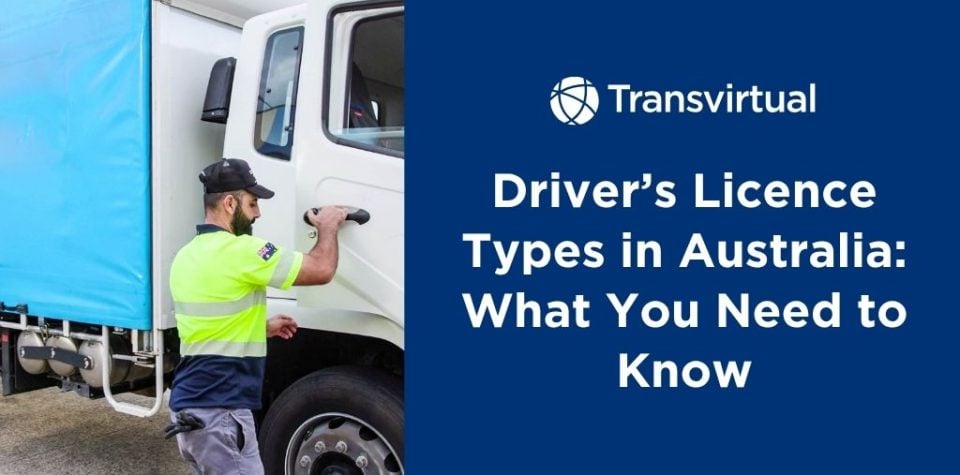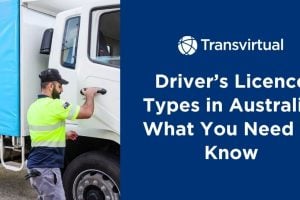Table of Contents
A license is never just a formality in the Australian trucking industry. A car (C) licence is the standard driver’s licence in Australia, allowing the holder to operate vehicles up to 4.5 tonnes GVM and seat up to 12 adults, and is the foundation for progressing to commercial licence classes. It’s critical to know which licence classes your drivers hold and which ones they’ll need, no matter if you’re managing a fleet, scaling your freight operation, or trying to fill roles during peak season.
Remember: if you put the wrong driver behind the wrong wheel, you could have a compliance issue, a delivery delay, or worse. Holding the correct car licence or commercial driver’s licence is a legal requirement for operating different vehicle types. Today, let’s cut through any confusion and look at each type of commercial driver’s licence in Australia, breaking down the main licence classes, including the car (C) licence and commercial upgrades.
Australian CDL Classes (Licence Class)
Light Rigid (LR)
If your business runs smaller trucks or community transport, all you’ll normally need is a driver with an LR (Light Rigid) licence, also known as class LR.
What it covers:
Vehicles up to 8 tonnes GVM (gross vehicle mass) that can be driven with an LR light rigid licence
Small buses that seat up to 12 adults including the driver and are designed to carry passengers
To get an LR light rigid licence, a driver must hold a regular car licence (class C) or learner licence for at least one year before upgrading to class LR. The most common jobs for LR licence holders include courier vans, tradesman trucks, community shuttles, and aged care transport, which are typically driven for community and commercial purposes.
Medium Rigid (MR)
Small-to-mid sized businesses that typically manage short-haul and urban logistics need drivers with an MR (Medium Rigid) licence, also known as class MR, which is required for vehicles classed as medium rigid. You aren’t quite moving semi-trailers, but still work with heavy loads.
What it covers:
Single vehicles with more than 8 tonnes GVM
- Limited to vehicles with no more than two axles
Examples of vehicles that can be driven with an MR medium rigid licence include waste collection trucks, local freight haulers, cement mixers, tow trucks, and some types of buses.
Drivers need to have held a car licence (class C) for at least a year before upgrading to MR, but must demonstrate ability to handle heavier vehicles in stop-start conditions. The most common jobs for MR licences include operating vehicles classed as medium rigid, such as those listed above.
Heavy Rigid (HR)
The HR (Heavy Rigid) licence, also known as class HR, is a type of heavy vehicle licence that enables drivers to operate a wide range of heavy vehicles.
What it covers:
Any vehicle over 8 tonnes GVM with 3 or more axles
Includes articulated buses, larger rigid trucks, and freight movers
Examples of vehicles that can be driven with a class HR licence include concrete agitators, garbage trucks, tow trucks, and some mobile cranes
To get this licence, a driver will need to hold a car licence (class C) for at least two years before upgrading to HR. Vehicles driven under this licence tend to be far bulkier, braking distances are longer, and maneuvering effectively takes real skill. The most common use cases for an HR licence include freight and warehouse delivery trucks, utility and maintenance vehicles, and construction service trucks.
Heavy Combination (HC)
HC licenses are required for vehicles classed as heavy combination, including prime movers hauling semi-trailers over 9 tonnes. If the vehicle has a classic truck-and-trailer silhouette, such as a prime mover with a semi-trailer or a combination using a low loader dolly, it probably requires an HC license.
Heavy combination licenses are most commonly used for bulk food logistics, livestock and grain transport, and linehaul operations with a single trailer. Examples of vehicles that can be driven with an HC licence include prime movers with semi-trailers and combinations with low loader dollies.
To apply for an HC license, a driver must have first held a car licence (class C) and then either an MR or HR license for at least one year. They’ll need to demonstrate competency in reversing with a trailer, managing trailer sway, and understanding load dynamics.
Multi-Combination (MC)
The MC (Multi-Combination) licence is required for vehicles driven as multi-combinations, including prime movers with multiple trailers. This is a much more heavy-duty class of license, only for businesses that really need to haul huge amounts of products or materials. If you’ve ever seen someone pulling two semi-trailers connected together, they most likely have their MC class license.
What it covers:
B-doubles
Road trains
Any vehicle driven with more than one trailer, including prime movers with multiple trailers
Vehicles using a low loader dolly
Examples: triple trailer combinations, vehicles used in mining or long-haul logistics
To qualify for an MC license, a vehicle driver must have held an HC license for at least one year and meet specific requirements before upgrading from a car licence. Training is usually provided by Registered Training Organisations (RTOs) with both practical and theoretical assessments. If you specialise in mining or long-haul logistics, you may even have your own in-house training program to help drivers acquire these licenses.
Extra Credentials
You may have a vehicle driver with the right class of license, but a person may still need certain extra credentials to haul your loads. This depends entirely on the specific cargo or operation, and includes:
Dangerous Goods (DG) License: Required for transporting fuel, chemicals, or pressurised gas. A person must hold a high risk work licence to carry certain hazardous materials.
Forklift License (LF): Mostly relevant for vehicle drivers that mustload or unload themselves, and a high risk work licence is required to operate a forklift.
Bus Driver Authority: Mandatory for passenger transportation vehicles in most areas that carry passengers for hire or reward, including the driver.
Fatigue Management Accreditation: For vehicle drivers running extended hours or in complex logistics scheduling scenarios.
Each state in Australia adds new wrinkles to the rules based on their own standards. For instance, New South Wales has stricter fatigue management standards, and Queensland has different RTO requirements than other states. Vehicle drivers may be subject to additional requirements depending on the state. Across the nation, the basics stay the same, but details may change dramatically once you cross a border. Make sure you’re fully up-to-date on rules and regulations before assigning a vehicle driver to a load!
Medical Assessment for Heavy Vehicle Drivers
When it comes to driving heavy vehicles in Australia, a medical assessment is more than just a box to tick—it’s a vital safeguard for both drivers and everyone else on the road. Because operating vehicles with a high gross vehicle mass (GVM), such as a heavy rigid (HR) truck, multi combination (MC) road train, or even a light rigid (LR) community bus, demands a higher level of physical and mental fitness, the standards are set accordingly high.
How to Choose the Right Licenses for Your Operation
Do you run a regional freight company with a mix of rigid trucks and semi-trailers? You might start with HR drivers and upskill later, or pay more for HC/MC-qualified drivers up front and guarantee peace of mind in the long run. Generally, operators must ensure each vehicle driver is licensed for the specific motor vehicle to be driven, especially when operating on main roads.
If you do want to upskill later, doing so can be a serious expense for your operation, especially if you have multiple drivers:
LR or MR: $1,000–$1,500
HR: $1,500–$2,500
HC: $2,000–$3,000
MC: $3,000–$5,000+
There’s really no single answer to choosing the right licenses. Many operators think about it like this:
Fleet mix matters: If the majority of your jobs only require a single trailer, you can start with HC as the base license for your vehicle drivers, ensuring each motor vehicle is driven by someone with the correct qualifications.
Coverage area counts: You’ll benefit more from MC-level versatility if your vehicle drivers often drive longer distances on main roads.
Upskilling can pay off: Investing in training for a solid HR vehicle driver at first can be far cheaper than trying to recruit the perfect MC driver during a hiring crunch.
Staying flexible: The more qualified your vehicle drivers are from the beginning, the fewer headaches you’ll have when routes change or last-minute deliveries come pouring in.
There’s also the issue of business insurance. With a properly licensed, well-trained driving team, you can save serious money on premiums and claims down the line. It’s ultimately what matters most to you, and what works for your current and future budgets.
Performance, Safety, and Trust
When you assign your drivers to transport a load, you know you’ll be putting them in charge of heavy steel, thousands of dollars in cargo, and the smooth running of your whole supply chain. Every vehicle driver is subject to strict safety and compliance standards when operating a motor vehicle. This means you need to take licensing seriously to guarantee yourself some peace of mind when they’re on the road, ensuring that all motor vehicles are driven in accordance with legal and health requirements.
Whether you’ve just hired your first LR driver or want to expand your MC-capable fleet, you need to do your research and make sure everyone is on the same page. That way, you can focus on what matters most for your business.
For more coverage on the Australian transportation and logistics industry, explore more engaging and informative posts on the Transvirtual blog!


